As the overhaul of the Rangers roster continues, the Rangers special teams construction and deployment will also be overhauled. While less is more and major changes likely won’t be made, we will see some tweaks. At a minimum, the Rangers need a new net-front man on PP1 with the departure of Chris Kreider. There are also questions about Mika Zibanejad’s ice time and diminishing returns on the penalty kill, who is on PP2, and which defensemen will actually get the lion’s share of penalty kill minutes.
Rangers special teams systems likely won’t change much
There is a lot of focus put on systems, but on special teams there isn’t much variation. Most 5v4 powerplays rotate between an overload and a 1-3-1, depending on the powerplay unit. When it gets to 5v3 powerplays, teams shrink the ice and run more of a spread powerplay, playing from the dots and below. On most penalty kills, teams rarely stick to one strategy and rotate through a diamond, box, or wedge.
Last year, the Rangers special teams weren’t done in by systems, but by effectiveness and stagnation. Last year’s PP1 ran a 1-3-1, but were stationary and predictable. That was a big change from the prior year where we could see rotation and desire to find open space. They went from a top-three powerplay (26.4% rate) to 28th in the NHL (17.6%) in one year and it’s safe to say this alone cost them the playoffs.
Last year’s penalty kill regressed from the prior season’s top-three 84.5% success rate, but not much. They were still a top tier penalty kill with an 80.3% success rate and led the NHL with 18 shorthanded goals. Florida was next with 12 shorthanded goals.
The Rangers special teams had same systems and mostly the same personnel as last season. The issue was with effectiveness.
Special teams ice time leaders from last season
The Rangers special teams will go through some changes, even if not at the system level. At the very least, the powerplay will need to replace Chris Kreider’s 196 minutes TOI with the man advantage. It’s probably a safe assumption that PP2 will have more of a TOI share as well, though maybe not right away.
Only 7 players saw 90+ minutes on the powerplay: The top-five guys, JT Miller, and Alexis Lafreniere. Numbers 8 and 10 on the list (Zac Jones, K’Andre Miler) are also gone. The first month or so of the season may be an extended training camp for the Rangers special teams as Sully looks to find a decent enough PP2 to get more of an even TOI split among both units, relying heavily on PP1 in the interim.
On the penalty kill, the Rangers will need to replace four of their top-ten in PK TOI: Miller (2nd, 164 mins), Ryan Lindgren (5th, 148 mins), Kreider (7th, 115 mins), and Reilly Smith (8th, 109 mins). This is where the Rangers special teams will see their biggest shake up. It will also be interesting to see what Sullivan does with Mika Zibanejad’s 163 minutes of PK time (3rd). He led the Rangers with 6 shorthanded assists.
Determining new PP units
The Rangers special teams units are going to see a shakeup. The question isn’t about whether it’s going to happen, but about how much change the Rangers special teams will see. The path of least resistance is to have JT Miller as the net-front man on PP1, much like how he was in Vancouver. Miller can also be an effective bumper should Sully decide to make larger changes. Assuming the path of least resistance, then PP1 likely looks the same, save for the Miller/Kreider swap.
PP2, in this scenario, probably focuses on Lafreniere on the off-wing and Will Cuylle in front of the net. The rest is up for grabs, dependent on which kids make the roster and earn the powerplay time.
I do think the powerplay units will change a lot as Sully adjusts to his roster. Perhaps it’s best to identify two guys per position in the 1-3-1 and then mix and match from there, knowing that some guys can fill in multiple roles on the powerplay.
- Net front: Miller, Cuylle, Trocheck
- Bumper: Miller, Zibanejad, Trocheck
- Left dot shooter: Zibanejad, Panarin
- Right dot shooter: Lafreniere
- Point: Fox
- Wild cards: Braden Schneider, Brett Berard, Brennan Othmann, Gabe Perreault, Scott Morrow
Much of the powerplay unit construction will depend on which of the four kids are NHL ready. Braden Schneider could be an interesting point man on PP2, but personally I think Fox should play the entire two minutes and then possibly remove him from PK duties.
Penalty Kill personnel will change
The penalty kill is likely to see more changes than the powerplay. At least 40% of the top-ten TOI players need to be replaced, and there may be a need to reduce both Adam Fox’s and Mika Zibanejad’s penalty kill time, depending on deployment. Much like above, determining units right now may be an exercise in futility, so instead it’s easier to identify which players will see PK time.
- Forwards: Trocheck, Zibanejad, Miller, Cuylle, Taylor Raddysh, Sam Carrick, Adam Edstrom
- Defense: Fox, Schneider, Vlad Gavrikov, Will Borgen
- Wild cards: Urho Vaakanainen, Brett Berard
The calls to remove Fox and Zibanejad off the penalty kill entirely are somewhat unfounded and entrenched in recency bias. They are both effective players on a top-ten penalty kill that had a “down year” and was still over 80% effective. The Rangers special teams weren’t that broken, especially the penalty kill. Less is more on this one.
Just remember, any changes we see with the Rangers special teams likely won’t truly be set until November. There are too many wild cards with rookies and open spots to truly predict and nail down what the Rangers special teams will look like in July.


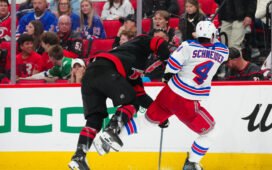
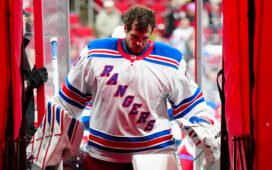
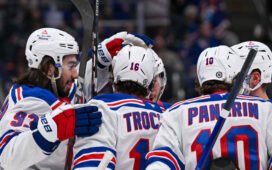
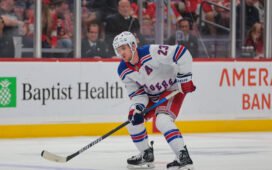
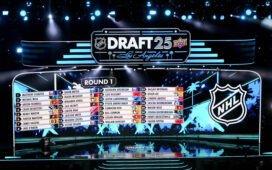
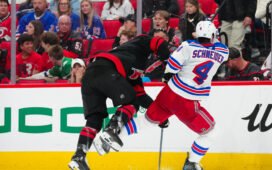
Recent Comments